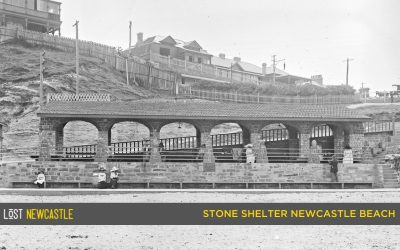Dear Patrons,
Thank you for supporting Lost Newcastle. This project has been 10 years in the making and I’m working hard to tell even more stories, share more photos, host events and more.
The November postcard is a beautiful reproduction of William Hatherell’s 1877 illustration of Newcastle’s iconic Bogey Hole.
The Bogey Hole was hand-hewn out of a wave-cut rock platform by convicts for Major James Morisset in 1819 for his personal use. Whether this work represented the enlargement of a naturally occurring rock pool used by Aboriginal people is not known.
As Morisset was the longest-serving Commandant of Newcastle, the pool was originally referred to as the ‘Commandant’s Baths’.
The Bogey Hole is situated at the foot of Shepherds Hill, or as it was known in the 1820’s “sheep pasturage hill”. Geologically, the rock in the area is sandstone/conglomerate typical of the coastal areas of the Hawkesbury Sandstone deposit on which Newcastle was built.
It is listed on the NSW State Heritage Register in recognition of its importance in the course of NSW’s history. Potentially the place has national significance as the earliest known example in the whole of Australia of a purpose-built ocean swimming pool.
I think it’s simply beautiful.
Again, thank you for helping. Lost Newcastle is a proud supporter of the University of Newcastle’s Vera Deacon Regional History Fund and an annual donation is made to the fund to help them continue digitising important photos and documents of our history.
Carol





0 Comments